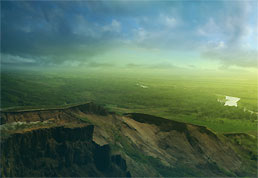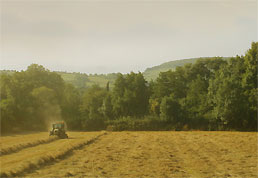PROFILE OF THE D.R. CONGO

Largest economy in the heart of Africa
DRC is vital to world economy. It contains the largest portion of the African rain forest, vast mineral deposits (mainly Uranium, Copper, Cobalt, Col-Tan, Diamond and Gold). The D.R. Congo alone contains more than 70% of world reserve of Col-Tan so vital to our digital technology (computer, IPads, cell phones, video games) DRC is located right in the Centre of Africa with a surface area of 2,345,000 Km�. Incredible possibilities of various widely developing activities: Agricultural, Breeding, Forest, Mining, Industrial, Tourism, etc. Surrounded by nine neighboring countries (common borders of 9,165 Km). Focal point of access to other African markets. Junction points with roads of Central Africa, the East, the West, the North and the South.

Poorest nation amongst the world
Although the Congo is very rich in natural resources,
100 years of poor Belgian colonial system, local dictatorships
and civil war, have left the country at the bottom as one
of the 5 poorest nations in the world. Hunger, poverty,
and lack of good educational system and infrastructures
are rampant in the Congo. The monthly salary for most people
in the Congo is between 50-150 dollars. Since 1997 the Congo
has suffered the world's deadliest conflict since
World War II, killing 5.4 million people. Citizens of
the DRC are currently among the poorest in the world, having
the second lowest
nominal GDP per capita according to the
IMF.
The two recent conflicts (the
First and
Second Congo Wars), which began in 1996, have dramatically
reduced national output and government revenue, have increased
external debt, and have resulted in deaths of more than
five million people from war, and associated
famine and disease.
Malnutrition affects approximately two thirds of the
country's population. In Kinshasa, for example, 50% of the
population have only one meal per day, 25% have one meal
every two days. According to the 2011 Report of the GLOBAL
HUNGER INDEX, the Congo-DRC is the only country to move
from alarming to "extremely alarming" hunger situation.
As a result of the 6-year civil war, over 5.2 million
children in the country receive no education. Many schools
and educational infrastructures are in ruin in this vast
country of 70 million people. In 2002, there were over 19,000
primary schools serving 160,000 students; and 8,000 secondary
schools serving 110,000 students. However, primary school
education in the Democratic Republic of the Congo is neither
compulsory, free nor universal, and many children are not
able to go to school because parents were unable to pay
the enrollment fees. Parents are customarily expected to
pay teachers' salaries. In 1998, the most recent year for
which data are available, the gross primary enrollment rate
was 50 percent.
